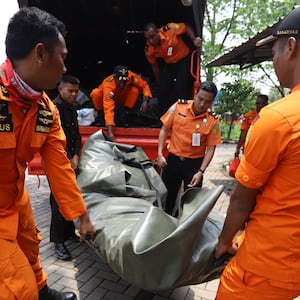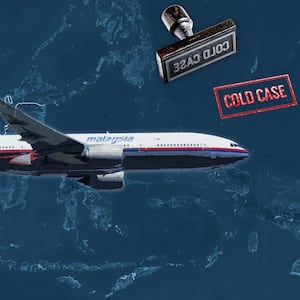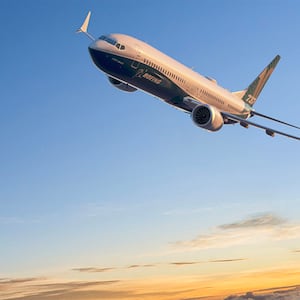Once more investigators urgently searching for the cause of an air disaster are frustrated because it occurred over water where crucial clues cannot be swiftly retrieved.
In this case Boeing has had to issue a warning to airlines about a problem with its new 737 MAX-8 jets—a problem that is believed to have caused the deaths of 189 people aboard a Lion Air flight that plunged into the Java Sea off the coast of Indonesia on October 29.
The warning about a problem with the flight controls focuses on erroneous data being fed to the elevators, part of the horizontal stabilizer that control whether the nose goes up or down. In this case it appears that the elevators were told that the nose was pulling up (when it was not) and countered this by forcing the nose down, directly creating the death dive.
Since this problem has never shown up before on any model of the 737 it suggests that it has been inadvertently introduced, possibly via software, into the latest systems without being previously detected.
The avionics on the 737 MAX-8 are of the most advanced generation. Data on the systems essential to flying the airplane is displayed on two large color monitors, produced by the U.S. avionics specialist Rockwell Collins.
At first glance the flight deck of the 737 MAX-8 does look state-of-the-art. In fact, the digital age instrumentation has been installed in a cockpit that dates from the analog era when the instrument panel was a mass of dials and switches. The basic structure and dimensions of the cockpit were fixed when the first model 737s were designed in the mid-1960s. The result is that pilots are still flying a machine that is an awkward hybrid of old technology and new.
This was noted when the only body to test fly new airplanes for public consumption, in the way that Consumer Reports tests new cars, Aviation Week, concluded its test of the MAX-8 by saying: “It is obvious that the 737 MAX-8 lacks the fly-by-wire controls, avionics integration and other advanced technologies of newer jetliners… there are only so many ways an airplane can be stretched, strengthened, lengthened and re-engined before it loses out to more modern designs.”

Comparable Airbus jets, the A320 series, were designed in the 1980s and pioneered fly-by-wire (meaning that pilot commands are transmitted electronically not manually). The Airbus system has what is called envelope protection. When the computers are flying the airplane they restrict control movements to prevent exactly the kind of extreme upset that doomed the Lion Air flight. The Boeing system does not have those limits, it leaves authority in the hands of the pilot at all times.
There are more than 200 737s of the new MAX version flying. They have hit a sweet spot with budget airlines because they combine new engines with greatly improved fuel efficiency and longer range. More than 4,700 have been ordered.
They are, for example, being flown over the Atlantic by Norwegian Airlines on new cut-price routes between New York Stewart and Providence, Rhode Island, to European destinations—the longest routes over water within the capability of the 737 MAX-8.
The Boeing and FAA response stopped short of grounding the 737 MAX-8. They and other regulators around the world are yet to fully understand what happened for lack of definitive evidence of what is clearly a serious technical fault. Even more worrying, this fault may have been introduced into the jet’s systems as part of an upgrade of the cockpit’s technology.
It is, however, already clear that in this model of jet—one that supposedly embraces the latest technology—the equipment designed to provide an instant location for the crash did not work as it should have, as in many cases before.
While huge technical advances have made flying far safer no urgent steps have been taken to deal with the challenges of recovering jets that are lost over water. This is now the weakest link in aviation safety.
In nine years 818 people have died in jets that have crashed into oceans. In each case equipment intended to locate the exact location of the crash has failed—in one case, Air France Flight 447 in 2009, it took up to two years to locate the wreckage, and in another, the infamous Malaysia Airlines Flight 370, in 2014, the wreckage has never been found.
The Lion Air 737 went down only nine miles from a coastline and in water around 100 feet deep, but it has still proved difficult to locate essential parts of the wreckage. One diver died in the operation.
To be sure, knowing the precise point where an airliner hits the water will not mitigate the catastrophic result. But the faster investigators can recover the two instruments that contain the key to what caused the crash, the flight data recorder (“black box”) and cockpit voice recorder the more likely it is that the investigation will pinpoint the cause and, equally vital, indicate whether the cause could recur.
Jets have two key devices for automatically transmitting the location of a crash site, whether in water or over land. The first are Emergency Locator Transmitters, ELTs. These are supposed to transmit indication of a violent impact and the location to a satellite that will then relay it to a ground base. The second are locator beacons attached to the two flight recorders, the most vital of which is the flight data recorder. It stores data on everything that happened to the airplane’s systems until the moment of impact.
The only recent crash over water where both systems worked was when EgyptAir Flight 804 plunged into the Mediterranean in 2016. (For this reason the count of the 66 people lost in the crash is not included in the total of 818 victims given above.)
In the Lion Air disaster nothing was received from the 737’s ELTs. Signals from the locator beacon on the flight data recorder were, however, picked up as were, for a while, those from the cockpit voice recorder.
These were not, however, sufficient to guide searchers immediately to the right location. The first confirmation of a crash site was debris floating on the surface, but currents had carried it away from the original place where the jet hit the water.
The flight was lost while it was still being covered by air-traffic control radar. When the black box was found by divers it was on the ocean floor only 13,000 feet from the airplane’s last recorded position on radar. That may seem an encouraging sign that the rest of the airplane was within reach, but it was not.
The beeps from the cockpit voice recorder faded before the instrument could be recovered, probably because even in the relatively shallow waters of the Java Sea there are strong currents that can swiftly bury sunken objects in mud.
These problems underline the fact that water depth is not in itself an indication of how difficult a search can be. The remains of the EgyptAir jet, although at a far greater depth, were in clearer water than in the Java Sea, and the main portion of the jet remained intact at the center of a debris field on the sea floor.
All of this safety regime, dependent as it is on data that goes down with the airplane, dates from the early days of jet travel in the late 1950s. If commercial jets were equipped with readily available data streaming technology, all of the vital information about the behavior of an airplane in the minutes before a crash could be monitored from the ground via satellite and be immediately available in the event of a crash.
At the same time the point where the streamed data stopped being transmitted would give a precise fix of the crash location.
Even without these steps being taken, aviation experts have argued for years that commercial jets should follow the practice of military airplanes and have ELTs that are automatically ejected on impact and, in the case of a crash into water, float so that they function as physically traceable beacons.
Following the loss of Air France Flight 447 in 2009 French investigators urgently pointed to the failure of the airlines and international airline regulators ,(as well as the International Commercial Aviation Organization, ICAO, the United Nations body that speaks for commercial aviation worldwide) to move ahead and equip all jets regularly flying over water with real time tracking systems that would, in one step, provide both a picture of any technical failure that preceded a crash and provide an instant and reliable fix on exactly where the airplane went down.
Even though airlines were prepared to spend millions of dollars on cabin entertainment systems that used live satellite connections they resisted the warning from the French that the fate of Flight 447 could be repeated. When, five years later, MH370 disappeared into the southern Indian Ocean the issue gained a lot more attention. Nonetheless, the ICAO set a date of 2024 as the deadline for when they wanted all airlines flying over water to comply with a live tracking regime. It will take years before all airline fleets operating over water will be compliant with standards set out by the ICAO.
This year new fleets of mini-satellites that are capable of tracking all airplanes on long haul flights over oceans have been put into place—but, as the Lion Air crash shows—even the latest model jets to join airline flights are not yet equipped to take advantage of these systems.
Live streaming of an airplane’s systems during a flight would cover the same critical parameters as the data contained in the flight data recorder. This could have provided a crucial advance warning of trouble in the case of the Lion Air jet.
Any breakdown of the 737’s critical control systems would have been detected and instantly recorded.
As it happened, the 737 had experienced a problem on four previous flights. On the last flight it completed before the fatal one the instruments feeding information to the captain were giving confusing readings that made control difficult.
The captain handed over to the copilot who managed to complete the flight to Jakarta, although passengers on board described the ride as being “like a roller coaster.” Lion Air claims that the cause of this problem was identified and corrected during the eight hours the jet spent on the ground at Jakarta before taking off again.
In the event, the pilots were only able to control the airplane for about 12 minutes. During that time they requested and were granted permission to return to Jakarta. They managed to maintain an altitude of between 5,000 and 5,400 feet before losing control and the jet plunged steeply into the water.
The jet appears to have shattered into many pieces, an impact that can have the effects of a bomb when the pressurized fuselage is ripped apart by the force of the fall. The extraordinary force of this impact was confirmed by the condition of the flight data recorder.
The recorder is contained inside a casing that is designed to be crash-proof. But Indonesian investigators reported that the casing was badly damaged. The recorder itself required special handling to ensure that its data remained retrievable. And that is the real cost of depending on data that goes down with the airplane—not yet knowing whether the whole story will ever be known. And that is the real cost of depending on data that goes down with the airplane—not yet knowing whether the whole story will ever be known.
Editor's Note: This story has been updated to clarify ICAO does not regulate airlines or undertake airplane equipment.









